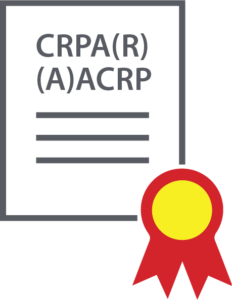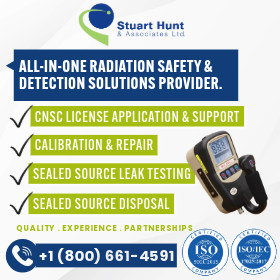CRPA(R) Prep, May 2023

Why the CRPA Community and Its Available Resources Are the Best Part of Membership
Here is a story of a bright-eyed, bushy tailed RSO who walks into a new place.
The place resounds with the tic-tic-tic of many detectors, stoically on the lookout for those rogue nano particles carrying tens of millicuries each, or should I say hundreds of megabecquerels. Otherwise, undetectable sneaky little droplets waiting to take advantage of the first air principles of aseptic techniques to make their way into places unwanted. While hundreds of small pads reeking of alcohol get rubbed fervently across a large number of surfaces only to be shoved into little tubes and send flashes of light into crystals that live in the darkness, surrounded by layers of lead to help keep them quiet. One, then another, and another, and another, in quick succession to the dance of the 500-a-day packages longing to get away.
Speed, but with precision, gets them properly out on time and ready for the road ahead—shipping papers and logbook in hand, with much more than a 5-points check prior to departure. 24,536 km per day and, did you know that, in the province of Québec, if your company’s delivery vehicles need to be placarded on occasion due to that pesky yellow 3 (even only 1% of the time), it magically turns your fleet of small cars, vans, or SUVs into 4,500 kg eighteen-wheelers?
What’s inside, you ask? A mix of old faves and new discoveries that make their way out in hopes of becoming popular. But every one of them falls under the spell of the 227 standard operating procedures with 25% in constant revision, et aussi en traduction!
Variety is the spice of life—for every test and camera, there is something to be prepared. Whether milking a prolific herd of more than two dozen or accelerating some particles to 20% of the speed of light, there will be plenty for cooking. However, as much as the kitchen fills with goods, so does the garbage can.
Although many disappear quickly, some unwanted elements linger. They are not easy to handle, and despite the many programs, nobody seems to want them. The cobalt brothers are notorious, though let’s not underestimate their collaborators, Tritium and Manganese 54, when it comes to hanging around. Though volumes are small, when you’re accelerating 12 hours-per-day, week after week, month after month, year after year . . . you get the picture. Finding solutions to make less solutions and keeping volumes down is the key for now.
In a secluded and heavily monitored area with alarms lives the RSO’s best friend, I-131. Highly reactive, volatile, and often of quite unpredictable behaviour, he is kept under confinement with nuclear-grade armed guards from the Carbon KI and Triethylenediamine squads. Despite these security measures, numerous surveillance protocols are in place for thyroids, interior and exterior air.
Though often undercover with special epoxy paint that can sustain the constant assaults from strong disinfectants, and because the price of platinum just won’t seem to go down, several dozen weightlifters and pieces of equipment are singlehandedly keeping the lead producers in business.
So, when the familiar sounds of the NSCA come crashing into those of Health Canada, Transport Canada, IATA, CTQ, MTO, CATSA, MOL, and CNESST, it’s nice to be able to reach out to others for guidance. If for nothing else than to share who else is out there? Lessons learned? Best practices? Solutions that can be modified and adapted?
As they say, a burden shared is a burden halved . . . or quartered? Or three-hundredth?
 Valerie Phelan
Valerie Phelan
Valerie has been a CRPA member since 2002 and has served on many committees, on the board of directors, and as president in 2018.
She obtained her BSc in physics from Boston University in 1996 and spent the following two years at McGill University studying high energy-physics, biology, and organic chemistry before going to the University of Toronto, where she completed an MSc in occupational health and safety in 2001.
Valerie started working at the University of Toronto as a radiation safety officer in 2001, moved to University Health Network in 2003, then went back to broader environment, health, and safety at Ryerson University (now Toronto Metropolitan University) in 2008. She has been the corporate radiation safety officer at Isologic Innovative Radiopharmaceuticals since 2016.
Do you want to read more articles like this?
The Bulletin is published by the Canadian Radiation Protection Association (CRPA). It’s a must-read publication for radiation protection professionals in Canada. The editorial content delivers the insights, information, advice, and valuable solutions that radiation protection professionals need to stay at the forefront of their profession.
Sign up today and we’ll send you an email each time a new edition goes live. In between issues, check back often for updates and new articles.
Don’t miss an issue. Subscribe now!
Subscribe

 Valerie Phelan
Valerie Phelan

